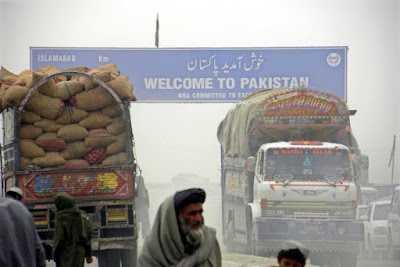Afghanistan’s Trade Dependence on Pakistan: A Reality or Illusion?
Afghanistan’s Trade Dependence on Pakistan A Reality or an Illusion?
Which country better serve economic needs of Afghanistan: Pakistan or Iran ?
I will try to address these questions in this article:
The trade volume of any state depends on its geographical location. In the case of Afg, it is 1 of 32 landlocked developing countries (LLDCs) in the world. Being a landlocked country, Afgh is dependent on Pakistan for its trade. Pakistan provides a transit route for Afg under the Barcelona Statute on freedom of transit, Article V of the GATT 1947. However, Time & again, political disturbances btw the 2 states resulted in trade disruptions. Such as trade & border blockades in 1947, 1951, 1955, & 1963. However, to immune trade from political tensions between the two states, Pakistan and Afghanistan inked the Afghanistan Transit Trade Agreement (ATTA) in 1965 to accommodate the transit of goods exported from and imported into Afghanistan through the Pakistani port of Karachi.
Later, Pakistan established Afghan Trade and Development Cell (ATDC) in 1995 and in the post-Taliban era, Pakistan and Afghanistan established Joint Economic Commission in 2002 to facilitate trade. his commission was intended to review the ATTA, promote investment, the formation of Pakistani bank branches in Afghanistan, construct a railway line between Chaman and Spin boldak and Chaman and Kandahar, and establish another trade route via Waziristan. On October 28, 2010, the second Afghanistan and Pakistan Transit Trade Agreement (APTTA) was inked. Noteably, Afghanistan's exports to Pakistan have risen at an annualized rate of 17.9% over the last 17 years, from $29.9 million in 2003 to $492 million in 2020.
On the other hand, Pakistan's exports to Afghanistan have increased at a rate of 4.55% over the last 17 years, rising from $408 million in 2003 to $870 million in 2020. Resultantly, as per the World Bank, Afghanistan Economic Monitor, from January to May 2022, Pakistan's imports from Afghanistan decreased by 40% compared to the same period the year in which Afghanistan's exports to Pakistan increased by 88% . Now, Afghanistan enjoys an overall trade surplus with Pakistan about USD 112.5 million. In contrary, when the Taliban retook the Kabul, according to the ACCI, due to declining demands in the Afghan markets, the imports from Iran have dropped by 40 percent, going from $2 billion to $1.2 billion.
As Iran is suffering from the western imposed strong economic sanctions thereby Afghanistan serves as a breathing space for Iranian traders to pour in their products in Afghanistan. Thus, Afghanistan, realistically speaking is a dumbing yard for Iranian traders. Divorced from the west, Iran has already started to work on its ‘Pivot to Asia’ or ‘Look East’ policy. International relations pundits believe that under this policy Iran is looking to make Afgh totally dependent on it. For instance, Iran is 3rd largest electricity exporter to Afghanistan and so is the case of fossil fuels. Thus, energy is a strategic asset for any state so once Iran is looking to be the master of Afgh's energy sector.



Comments
Post a Comment